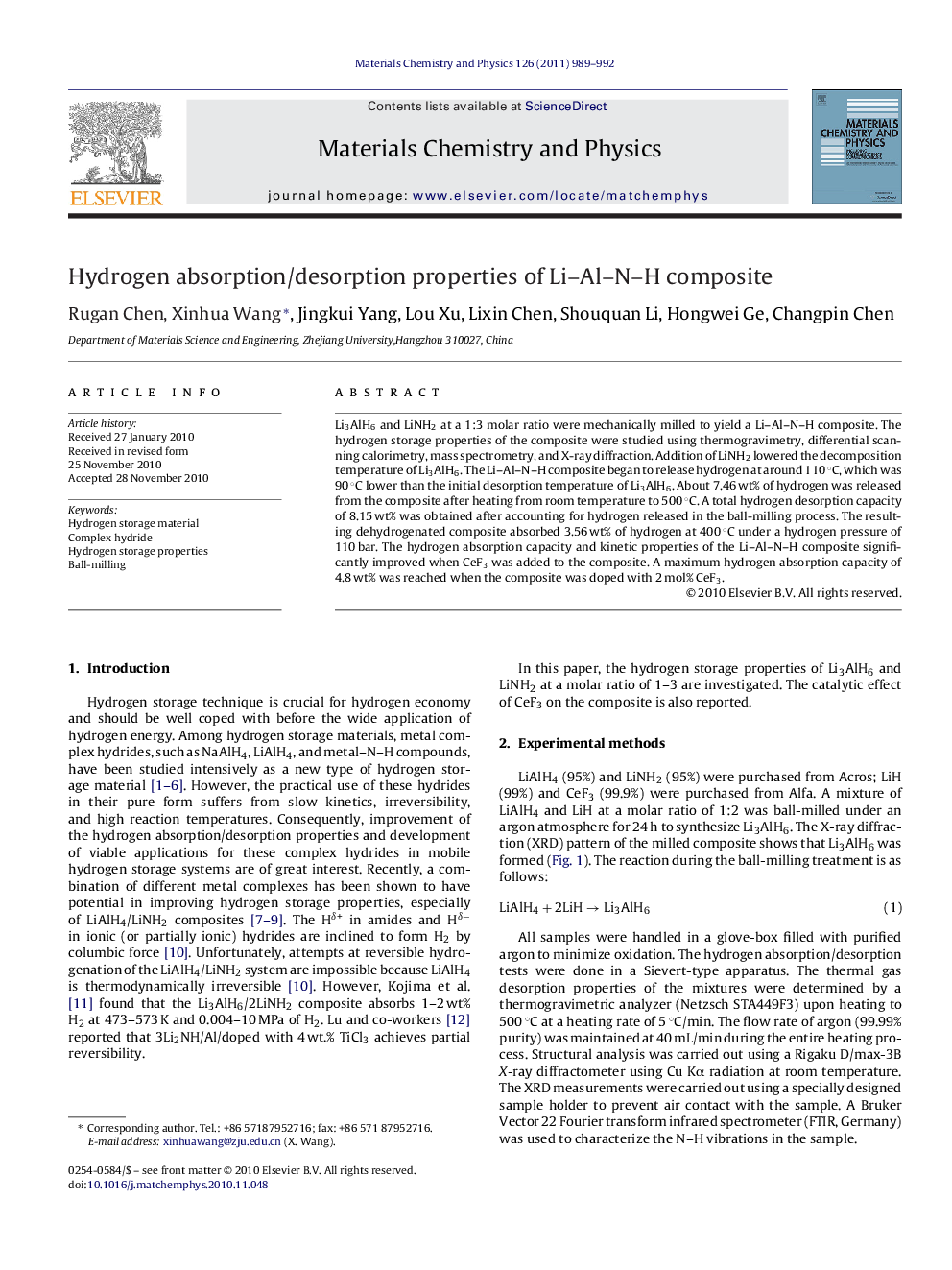| Article ID | Journal | Published Year | Pages | File Type |
|---|---|---|---|---|
| 1525000 | Materials Chemistry and Physics | 2011 | 4 Pages |
Li3AlH6 and LiNH2 at a 1:3 molar ratio were mechanically milled to yield a Li–Al–N–H composite. The hydrogen storage properties of the composite were studied using thermogravimetry, differential scanning calorimetry, mass spectrometry, and X-ray diffraction. Addition of LiNH2 lowered the decomposition temperature of Li3AlH6. The Li–Al–N–H composite began to release hydrogen at around 110 °C, which was 90 °C lower than the initial desorption temperature of Li3AlH6. About 7.46 wt% of hydrogen was released from the composite after heating from room temperature to 500 °C. A total hydrogen desorption capacity of 8.15 wt% was obtained after accounting for hydrogen released in the ball-milling process. The resulting dehydrogenated composite absorbed 3.56 wt% of hydrogen at 400 °C under a hydrogen pressure of 110 bar. The hydrogen absorption capacity and kinetic properties of the Li–Al–N–H composite significantly improved when CeF3 was added to the composite. A maximum hydrogen absorption capacity of 4.8 wt% was reached when the composite was doped with 2 mol% CeF3.
